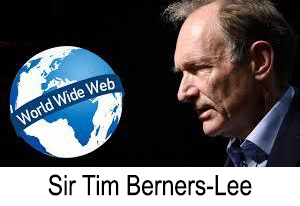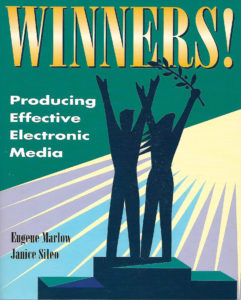It is a truism that laws more often than not lag behind cultural customs especially in times of change, to which we could add in times of rapid technological change. Sociologist William Fielding Ogburn (1896-1959) posited in 1922, for example, the difference between “material culture” and “adjustment culture.” The former refers to technology, the latter to the often lagging response to technological change on the part of members of a culture and its cultural institutions. In other words, technology is the primary engine of progress, i.e., change, and it takes time for people and institutions to catch up to the changes and characteristics new technology brings, especially when it comes to terms and definitions.
In academia adjustments to technological change with respect to programs, courses, and especially terms are more often than not “behind the curve,” never in front of it. Often, there is a tendency to grab on to a new technology well after it has been embraced by early adopters and to describe “new” courses with terms gleaned from the popular media without much aforethought.
I have observed this from direct experience.
In 1988 the Journalism Program at Baruch College (City University of New York) invited me to create and teach courses in video field production and radio news. I was the first professor in the program with a print and electronic media background based on my recently acquired Ph.D. and experience in video and radio production.
 In reality, I was hired because the Speech Department (now the Department of Communication Studies) had initiated a course in “Corporate Video” and the Director of the Journalism Program (then a part of the Department of English) didn’t want to be outdone! In other words, inter-departmental competition motivated my being hired. Mind you, this was 1988, a year before (now Sir) Tim Berners-Lee introduced the World Wide Web which, in turn, began the slow but inexorable demise of print journalism. So, in some small measure, the then director of the journalism program (a full professor with a Ph.D. in English Literature, now retired) can be forgiven for not having a crystal ball to peek into the future.
In reality, I was hired because the Speech Department (now the Department of Communication Studies) had initiated a course in “Corporate Video” and the Director of the Journalism Program (then a part of the Department of English) didn’t want to be outdone! In other words, inter-departmental competition motivated my being hired. Mind you, this was 1988, a year before (now Sir) Tim Berners-Lee introduced the World Wide Web which, in turn, began the slow but inexorable demise of print journalism. So, in some small measure, the then director of the journalism program (a full professor with a Ph.D. in English Literature, now retired) can be forgiven for not having a crystal ball to peek into the future.
It was not until 2007 (19 years after my hiring) that the department hired a second professor with expertise in electronic journalism. Her specialty was “multimedia journalism.” And it was only until 2016 and 2017 that a third and fourth professor with print and electronic journalism credentials were hired. The latest addition to the faculty has deep experience in podcasting. That’s four professors out of 11 full-time professors in 29 years, even though in this same period the world of journalism had moved inexorably to a greater reliance on visualization (video) and orality (podcasting) via the computer.
There was progress, however. The (now) Department of Journalism introduced a course in “Advanced Multimedia Journalism” following the establishment of a course in “Multimedia Journalism” which I also taught. There’s now two courses in podcasting.
A couple of years ago we were in the throes of a self-review in response to periodic accreditation requirements. One of the department’s “learning goals” (originally formulated in 2013) dealt with “multimedia.” My reaction to reading this learning goal was to immediately feel how out of date and mis-defined it seemed. It had been articulated in 2013 by a professor with no “electronic journalism” experience to speak of. This prompted me to look into the technical definition and history of the term “multimedia.” My search taught me again that all things have antecedents and confirmed that academia is usually behind the curve.
I discovered the “concept” and “term” multimedia is about 60 years old! Yes, it’s that old and it predates the advent of the personal computer. It’s also another example of what’s old is new again.
 According to several sources, the term multimedia was coined by singer and artist Bob Goldstein (later ‘Bobb Goldsteinn’) to promote the July 1966 opening of his “LightWorks at L’Oursin” show at Southampton, Long Island. Goldstein was perhaps aware of an American artist named Dick Higgins, who had in 1964 discussed a new approach to art-making he called “intermedia.”
According to several sources, the term multimedia was coined by singer and artist Bob Goldstein (later ‘Bobb Goldsteinn’) to promote the July 1966 opening of his “LightWorks at L’Oursin” show at Southampton, Long Island. Goldstein was perhaps aware of an American artist named Dick Higgins, who had in 1964 discussed a new approach to art-making he called “intermedia.”
A month later, on August 10, 1966, Richard Albarino of Variety borrowed the terminology, reporting: “Brainchild of songscribe-comic Bob (‘Washington Square’) Goldstein, the ‘Lightworks’ is the latest multi-media music-cum-visuals to debut as discothèque fare.”
But wait! There’s more. Two more years later, in 1968, the term “multimedia” was re-appropriated to describe the work of a political consultant, David Sawyer, the husband of Iris Sawyer—one of Goldstein’s producers at L’Oursin.
The original meaning of “multimedia” kept evolving. In my 1995 book Winners! Producing Effective Electronic Media (Wadsworth Publishing Company) co-authored with  Research Associate Janice Sileo, in a chapter entitled “Multimedia” we wrote, “The Microsoft Corporation, in a February 1993 Backgrounder, defined computer-based ‘multimedia’ as ‘the integration of text, graphics, audio, video and other types of information. . . .’.” Further, “Clearly, multimedia has evolved from an integration of various digital, electronic, aural, and visual technologies into an interactive medium for use in the home and the office.” Sound familiar? 1993 is 29 years “after” the term was originally coined. Yet some journalism educators use the term and define “multimedia journalism” as if it were invented just a few years ago!
Research Associate Janice Sileo, in a chapter entitled “Multimedia” we wrote, “The Microsoft Corporation, in a February 1993 Backgrounder, defined computer-based ‘multimedia’ as ‘the integration of text, graphics, audio, video and other types of information. . . .’.” Further, “Clearly, multimedia has evolved from an integration of various digital, electronic, aural, and visual technologies into an interactive medium for use in the home and the office.” Sound familiar? 1993 is 29 years “after” the term was originally coined. Yet some journalism educators use the term and define “multimedia journalism” as if it were invented just a few years ago!
Clearly, the term “multimedia” has been bandied about and used by journalists and professors of journalism who have no concept of its origin or layered meanings. Further, the term “multimedia journalism” is likewise mis-construed. It should be “computer-based journalism” or “digital journalism. “ If used even more correctly, “multimedia” would also refer to film, broadcast and cable television. After all, these communication media combine sound with pictures and graphics and text of all kinds. This is an example of a more recent generation of professionals ignoring the fact that there are always antecedents.
But to ask these folks to appreciate the abovementioned distinctions might be too much. They perceive they’re in the technological vanguard and don’t want to be disturbed in their academic bubble. They haven’t done their homework. They’re in the caboose of a technological train—with a longer history than realized—whose engine is ahead of them.
©Eugene Marlow, Ph.D. 2020


